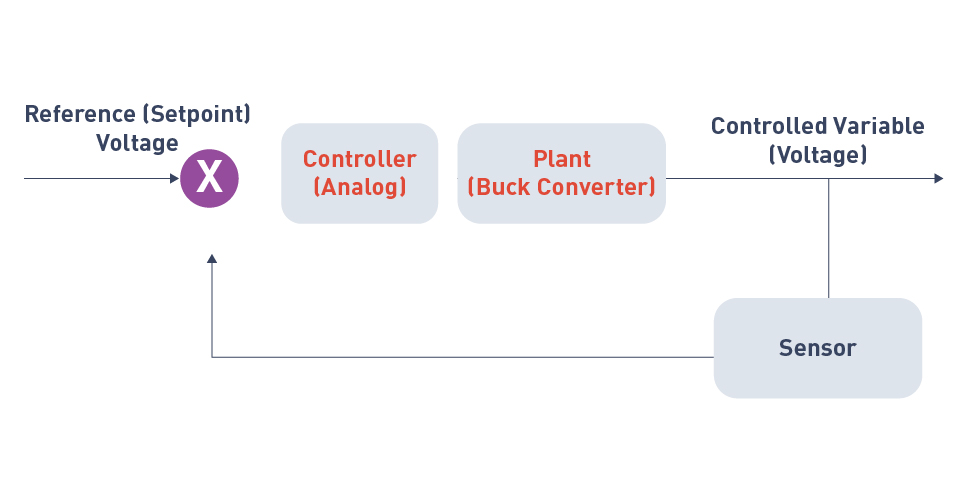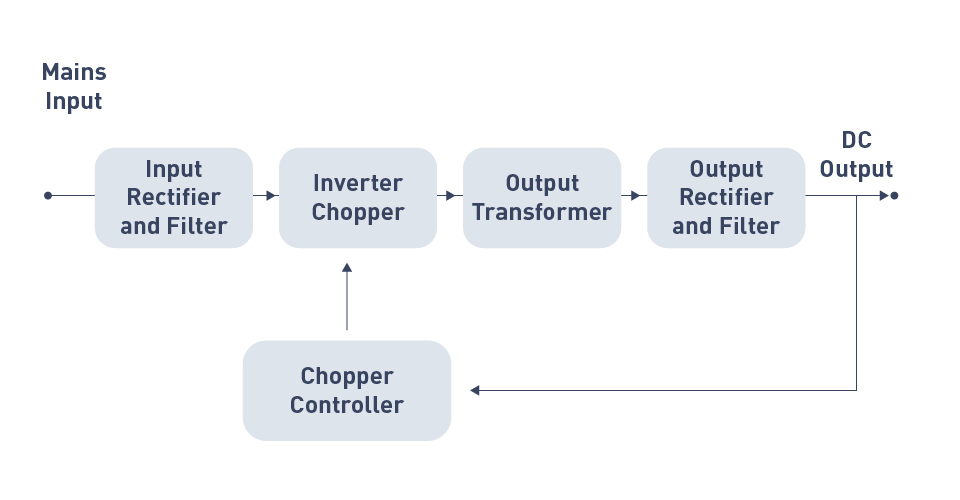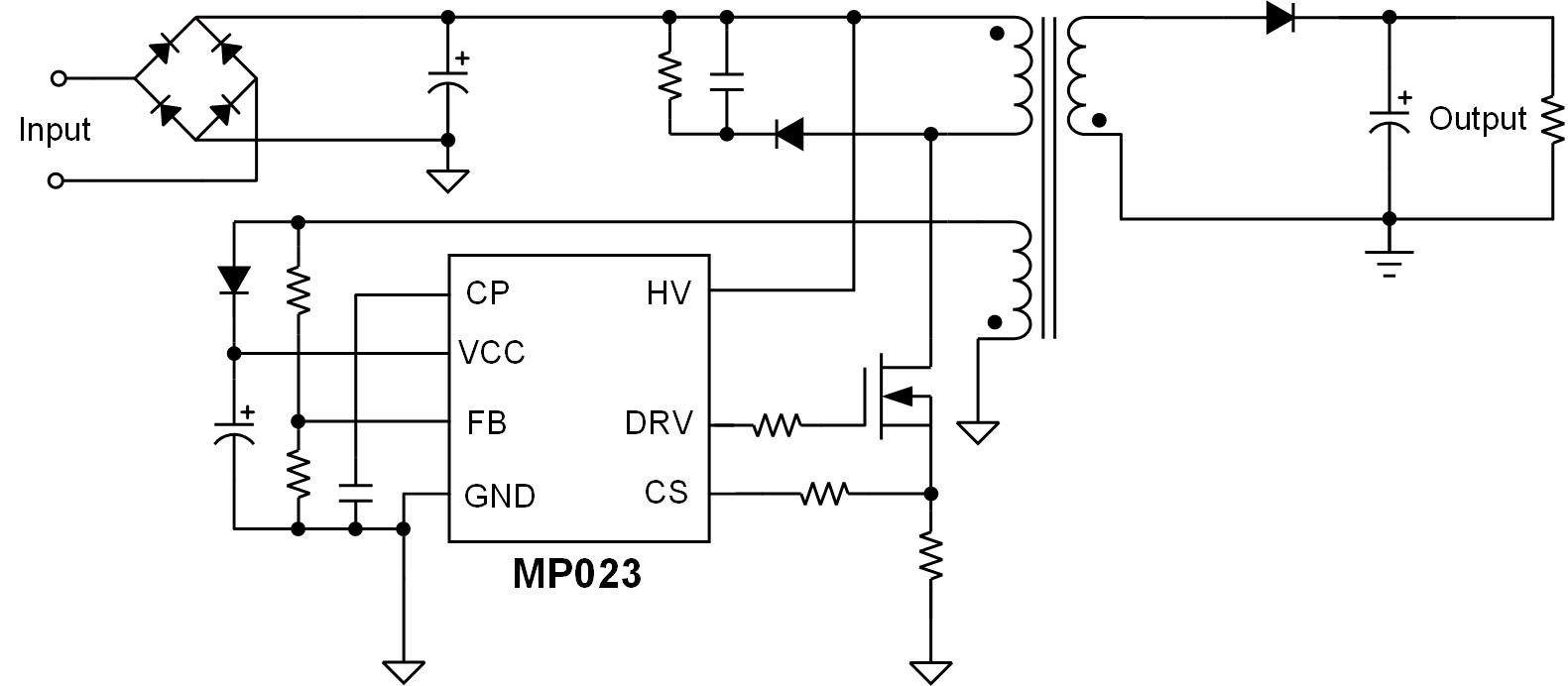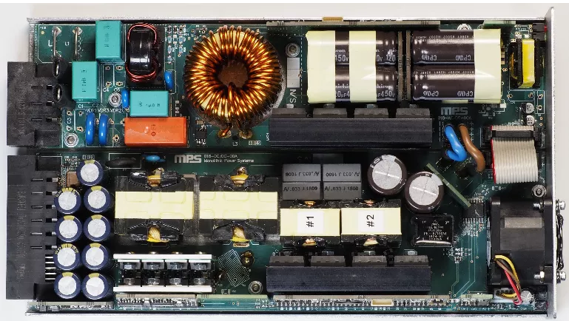Definition and Scope
Power electronics is an important subject of electrical engineering that deals with the control and conversion of electrical power using electronic equipment. From tiny consumer electronics to massive industrial systems and renewable energy sources, it covers a wide spectrum of technologies and applications. To appreciate power electronics' influence and importance in modern engineering, one must comprehend its concept and use.
Definition
Power electronics is the study, design, and implementation of electronic circuits used to convert and regulate the flow of electrical energy. Unlike traditional electronics, which primarily deals with the transmission and processing of information signals, power electronics focuses on high-power applications. These applications necessitate the conversion and control of electrical power to ensure the efficient, dependable, and safe operation of diverse equipment’s and systems.
Power electronics combines concepts from electrical engineering and electronics, such as electrical circuit theory, semiconductor devices, and control systems. Power electronic circuits use power semiconductor devices like diodes, transistors, and thyristors to effectively transfer electrical power from one form to another, regulate voltage and current levels, and manage power supply to loads.
Scope
The scope of power electronics is broad, encompassing many aspects of power conversion, control, and management across multiple domains. Power electronics covers several key topics, including:
Power Conversion: Power electronics' principal role is to convert electrical power from one form to another, such as DC to DC, AC to DC, AC to AC, and DC to AC conversion.
Power Conditioning: Power conditioning is another function of power electronics, which includes the elimination of distortion and harmonics as well as the improvement of power factor.
Voltage Regulation: Power electronics is essential for keeping a steady output voltage in the face of fluctuations in input voltage or load conditions. This is critical for the stable operation of electronic equipment and systems, which require a continuous and reliable power supply.
Current Control: Controlling the flow of current is crucial for safeguarding electronic components and regulating power supply to various components of a system. Power electronic circuits can accurately manage current to avoid overload and improve the performance of devices like electric motors and LED drivers.
Energy Efficiency: Power electronics is useful in increasing the energy efficiency of electrical systems. Power electronic devices contribute to total energy consumption reduction, which is crucial for both economic and environmental sustainability.
Principles of Power Conversion
Power conversion principles underpin the design and operation of systems that manage and manipulate electrical energy to fulfill the demands of a wide range of applications. Understanding these principles is essential for engineers working with power electronic systems because they directly affect the efficiency, dependability, and performance of electronic devices and systems.
Up vs. Down Conversion
Principle: The fundamental function of power conversion is to raise the output voltage above the input voltage (up conversion) or reduce the output voltage below the input voltage (down conversion).
Applications: Up conversion is commonly used for power factor correction (PFC), generating greater voltages in battery-powered equipment, and UPS systems. Down conversion is commonly used in DC/DC power modules, AC-to-DC converters, and linear regulators in integrated circuits.
Linear vs. Switchmode Conversion
Principle: There are two primary methods for performing power conversion: linear and switchmode. To maintain a constant output voltage, linear conversion employs a linear regulator, which is usually a semiconductor working in its linear domain. This technique offers a simple approach to voltage control, delivering a consistent output with minimal noise. In contrast, the switchmode conversion uses high-frequency switching of semiconductor devices to change voltage levels. This approach reduces energy losses by rapidly switching components on and off, enabling improved efficiency and more compact designs.
Applications: Linear regulators are excellent for low-power applications that demand minimal output noise and accurate voltage. They are widely employed in analog circuits, audio devices, and sensitive measuring equipment, where signal integrity is critical. Their simplicity and ease of deployment make them ideal for applications that generate minimal heat. Switchmode converters are widely used in applications needing great efficiency, such as computers, telecommunications, and LED lighting. Switchmode converters are ideal for small devices because they can manage high power levels with low heat loss. Furthermore, they support a wide input voltage range and can be programmed to give a variety of output voltages, making them suitable for a wide range of electronic devices.
Efficiency
Principle: Efficiency is the percentage-based ratio of output power to input power. High efficiency is essential for lowering energy expenditures and the impact on the environment since it implies that less energy is lost as heat during conversion.
Applications: In renewable energy systems, like solar inverters, where optimizing the conversion of solar energy into useable electricity is critical, efficient power converters are crucial. Effective power converters in electric vehicles reduce energy waste throughout cycles of charging and discharging, extending battery life and increasing overall vehicle range.
Control
Principle: Control entails adjusting output voltage or current to preserve performance and stability under various load conditions. Feedback systems and control algorithms that dynamically adjust the converter's operation can achieve this.
Applications: Utilized in DC/DC converters to keep voltage levels constant in spite of variations in input voltage or load requirements. This is crucial for applications that require consistent performance, such as portable electronics. Control mechanisms are used in renewable energy systems to maximize the grid's integration of wind or solar power, guaranteeing reliable operation and energy distribution.
Isolation
Principle: Isolation is the electrical separation of the input and output to prevent current from being transferred directly. This is commonly accomplished using transformers or opto-isolators and is critical for safety and performance in many types of applications.
Applications: Power supplies, particularly those found in medical equipment, are frequently isolated to shield patients from noise and electrical issues and to guarantee the safe functioning of delicate equipment. Isolation is essential in industrial automation to safeguard control systems against excessive voltages and transients that might interfere with operations or harm machinery.
Key System Components
Key components in power electronics, such as power converters and controllers, are essential for designing and operating electrical power management systems. These components perform critical roles in transferring electrical energy from one form to another, controlling voltage and current, and ensuring that electronic devices and systems operate efficiently and reliably.
Power Converters
In power electronics, power converters are crucial components that change the form of electrical power. Power converters come in a variety of forms, each with unique uses and purposes:
AC/DC Converters (Rectifiers):
Function: Convert alternating current (AC) into direct current (DC).
Components: Diodes, thyristors, and silicon-controlled rectifiers (SCRs) are commonly used to allow current to flow in a single direction.
Applications: Utilized in battery chargers, electronic device power supply, and any other application needing a steady DC power source.
DC/DC Converters:
Function: Step up the voltage or step down the voltage to convert DC voltage levels to other DC voltage levels.
Types:
Buck Converters: Reduce the output voltage by stepping down the input voltage.
Boost Converters: Increase the output voltage by stepping up the input voltage.
Buck-Boost Converters: Provide an output voltage that is either more or less than the input voltage.
Applications: Extensively utilized in power supplies, electric vehicles, and portable electronics devices.
DC/AC Converters (Inverters):
Function: Transform DC power into AC power.
Components: To generate an AC output, use switching devices such as MOSFETs or IGBTs.
Applications: UPS, grid-tied renewable energy systems, and electric motor drives are all applications that require this.
AC/AC Converters:
Function: Adjust the voltage, frequency, or phase of AC power.
Types:
Transformers: Adjust the voltage of AC power.
Cycloconverters: AC power at one voltage and frequency can be directly converted to AC power at another voltage and frequency.
Matrix Converters: Offer flexible conversion without the need for DC stages in between.
Applications: Utilized in frequency conversion, industrial power supplies, and motor speed control.
Controllers
In power electronic systems, controllers are essential parts that control power converter operation and guarantee peak performance. Controllers can be analog or digital, with each having unique benefits and applications:
Analog Controllers:
Function: Power converters can be controlled via continuous signals.
Components: Add comparators, operational amplifiers, and other analog circuits.
Advantages: Offer minimal noise, quick response time, and ease of use in specific applications.
Applications: Ideal for high-speed or simpler applications where overhead from digital processing is undesirable.

Figure 2: Analog controller
Digital Controllers:
Function: Power converters can be controlled by digital signals and microprocessors or digital signal processors (DSPs).
Components: Incorporate programmable logic devices (PLDs), DSPs, and microcontrollers.
Advantages: Offer programmability, flexibility, and sophisticated control algorithms. They can readily adjust to changing conditions and use complex control strategies.
Applications: Extensively utilized in modern power electronic systems, such as smart grids, electric vehicles, and renewable energy systems.

Figure 3: Digital control
Integration of Converters and Controllers
The power converter and controller cooperate to accomplish the required power conversion and regulation in a typical power electronic system. For instance:
Switch-Mode Power Supplies (SMPS): A DC/DC converter controlled by a digital controller is commonly seen in an SMPS. In spite of variations in input voltage or load conditions, the controller maintains a steady output by monitoring the output voltage and modifying the converter's operation.

Figure 4: AC/DC SMPS with output voltage regulation
Inverters for Renewable Energy Systems: In a solar power system, an inverter transforms the DC power supplied by solar panels into grid-compatible AC power. The inverter's functioning is optimized by a digital controller, which guarantees effective energy conversion and maximum power point tracking (MPPT).
Motor Drives: In motor control applications, an AC/DC converter may initially convert grid power to DC before switching to a DC/AC inverter controlled by a digital controller. The controller modulates the inverter's output to control the motor's speed and torque.
Power Electronics Devices
For effective control and conversion of electrical energy, power electronic systems rely on a variety of semiconductor devices. These devices, which each have distinct roles in a circuit, include thyristors, power diodes, power transistors, and more. For power electronic systems to be designed and implemented effectively, it is crucial to comprehend these components.
Power Diodes
Power diodes are semiconductor devices used in power electronic circuits for protection and rectification because they allow current to flow in one direction.
Function:
Rectification: Power diodes enable electricity to flow only during the positive half-cycles of the AC waveform, converting alternating current (AC) to direct current (DC).
Freewheeling: When the primary switching device is off, diodes give the current a channel in circuits like motor drives, preventing voltage spikes.
Types:
Standard Diodes: Used in common rectification applications.
Fast Recovery Diodes: Designed to turn off quickly and utilized in high-frequency applications.
Schottky Diodes: Known for their minimal forward voltage drop and quick switching, they are ideal for high-efficiency applications.
Applications:
circuits for motor control, power supplies, battery chargers, and protection.
Power Transistors
Power transistors are essential parts of power electronic circuits for switching and amplification. They are appropriate for a range of power conversion applications since they can manage large currents and voltages.
Function:
Switching: Transistors regulate the flow of electrical power by acting as switches that turn on and off.
Amplification: Transistors are employed in several applications to amplify electrical signals.
Types:
Bipolar Junction Transistors (BJTs): BJTs are utilized in switching and amplification applications and are controlled by base current. Although they have a high gain, they need constant base drive.
Metal-Oxide-Semiconductor Field-Effect Transistors (MOSFETs): Voltage-controlled devices are noted for their rapid switching and excellent efficiency. They are commonly utilized in low to medium-power applications.
Insulated Gate Bipolar Transistors (IGBTs): Combine MOSFETs' ability to manage voltage with BJTs' capacity to handle high current. IGBTs are utilized in high-power devices such as inverters and motor drives.
Applications:
switching regulators, power supplies, motor drives, inverters, and amplifiers.
Table 2: Transistor comparison
| Feature | Bipolar Junction Transistor (BJT) | Metal-Oxide-Semiconductor Field-Effect Transistor (MOSFET) | Insulated Gate Bipolar Transistor (IGBT) |
| Type of Device | Bipolar (current-controlled) | Unipolar (voltage-controlled) | Hybrid (voltage-controlled, combines BJT & MOSFET features) |
| Control | Base current | Gate voltage | Gate voltage |
| Switching Speed | Moderate (slower than MOSFET) | Fast (high switching frequency) | Moderate (slower than MOSFET, faster than BJT) |
| On-State Losses | Higher (due to high conduction loss) | Low (very low on-resistance) | Moderate (lower than BJT, higher than MOSFET) |
| Voltage Handling | Moderate | High | Very high (handles higher voltages) |
| Current Handling | High | Low to medium | High |
| Switching Losses | Higher | Low | Low to moderate |
| Efficiency | Lower (due to higher losses) | High (good for low power) | High (good for high power) |
| Applications | Amplifiers, low to medium power switching | High-frequency, low-power applications, switching power supplies | High-power applications, motor drives, inverters |
Thyristors
Semiconductor devices called thyristors function as switches; once activated, they stay active until the current falls below a certain threshold. They are employed in applications where regulated rectification and high power are necessary.
Function:
Controlled Rectification: Power supplied to the load can be precisely controlled via thyristors, which regulate the phase angle of AC power.
Switching: Thyristors are perfect for high-power applications because they can switch large currents with minimal input.
Types:
Silicon-Controlled Rectifiers (SCRs): The most popular kind of thyristor, which is employed in controlled switching and rectification.
Triacs: Bidirectional thyristors, which let current to flow in both directions, are used to manage AC power.
Gate Turn-Off Thyristors (GTOs): Unlike conventional SCRs, thyristors that can be switched off by a gate signal providing more control.
Applications:
Industrial uses include power control, light dimmers, controlled rectifiers, and AC and DC motor drives.
Other Devices
Several more semiconductor devices, in addition to diodes, transistors, and thyristors, are essential components of power electronics:
DIACs:
Function: Bidirectional devices are used to activate triacs.
Applications: heater controls, motor speed controls, and light dimmers.
Silicon-Controlled Switches (SCS):
Function: Like thyristors, but with the ability to switch off the gate.
Applications: Phase control, counters, and pulse circuits.
Unijunction Transistors (UJTs):
Function: Timing and oscillator circuits employ trigger devices.
Applications: Triggering thyristors, pulse generation, and relaxation oscillators.
Integrated Circuits (ICs):
Function: Integrate several components onto a single chip to regulate, control, and manage power.
Applications: ICs for power management in industrial control, automobile power systems, and consumer electronics.







直接登录
创建新帐号